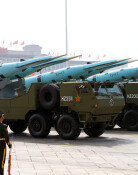Highly Educated Work Force in 20-40 Age Bracket is Leaving
Highly Educated Work Force in 20-40 Age Bracket is Leaving
Posted August. 30, 2004 21:59,
A majority of the core of economic activity, highly educated people in the 20-40 age group, is seeping out to foreign countries. This emigration pattern seems to have been initiated especially since the foreign exchange crisis suffered in the later half of the 1990s, and is drawing interest.
There has been an increase in emigration in married people, but a decrease in the percentage of seniors, housewives, and children, leading to speculations that people in the economically active age bracket are leaving their families behind and emigrating.
These results were elucidated by immigration data from the United States, Canada, and Australia immigration services, which was analyzed by the Computer Assisted Reporting (CAR) technique.
In the precision analysis of U.S. immigration data collected in an 11-year period between 1990 and 2000, it was found that of the six million cases reviewed, approximately 196,000 connected to Koreans were analyzed more precisely.
According to the results of the analysis, in 1998 right after the foreign exchange crisis, immigration fell in most age groups. However, the percentage of immigrants in their 40s particularly increased 12 percent from the year before. The percentage of immigrants in their 30s and 40s rose continually in the late 1990s up to 38.2 percent in 2000.
Although not an accurate emigration statistic, the Ministry of Foreign Affairs and Trade also found that this pattern is continuing, and also that, of the Koreans emigrating overseas, the percentage of people in their 30s and 40s is 43 percent.
Moreover, in 2000, the percentage of people in their 20s immigrating to the U.S. increased 49.7 percent compared to the year before. From an educational and occupational standpoint, the highly educated talent force is having trouble finding work at home due to economic recession. The size of this emigration is becoming significant.
In the case of U.S. immigrants, among the economically active population, not including housewives, students and the unemployed, the percentage of white collar workers such as science and engineering experts increased to 67.9 percent in 2000 from 59.8 percent in 1995.
Also, the percentage of unemployed, as well as people in the unknown employment category, was only 26 percent in 1997, but increased to 40 percent in 2000 after the foreign exchange crisis.
On the other hand, 19.7 percent of the economically active population were simple laborers in 1997, which decreased to 12.8 percent in 2000.
In the case of Canada, the number of engineers and other science and engineering experts immigrating in 1990 was only three. Following the foreign exchange crisis in 1998 and 2000, this number increased dramatically to 376 and 691 respectively.
According to a banks immigration consultant, In the case of people in their 40s, it seems that they are concerned with their childrens education and the gloomy reality in Korea, and choosing to leave their jobs and emigrate.
The consultant also speculated that the younger population in their 20s and 30s became greatly concerned with the uncertainty of their future and made up their mind to emigrate after witnessing the forced resignations and early retirement of their elders during the foreign exchange crisis recovery and arbitration process.
Professor Yoo In-jin of the Korea University Department of Sociology said, The fact that many in the core of the work force have been emigrating following the crisis can also be due to other countries encouraging trend of the immigration of young people with expert skills and knowledge.
Jae-Dong Yu Ji-Won Jun jarrett@donga.com podragon@donga.com







